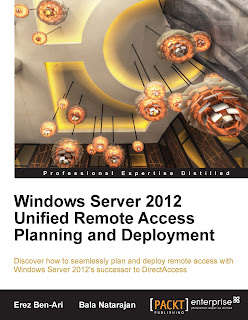Introduction
It's 5:45 p.m., and in just a few sweet moments, you can
finally finish the day's work and run out home. Suddenly, the phone rings,
sending a shudder through your spine. You recognize the number immediately.
It's Mr. McClueless from the downtown office, again. "Sorry, buddy,"
he whines, "my kids screwed up my computer again." Yeah, right! His
"kids". Your stomach turns in protest, realizing you can kiss that
planned steak dinner goodbye, as you're about to spend the next 2 hours walking
the guy through setting up the VPN for the sixth time this month. If you only
had direct access, you would probably be stuffing some serious sirloin into
your mouth instead.
Well, it's probably too late to save this dinner, but direct
access is so easy to set up now, that you can actually promise your boss (and
by that we mean your wife, of course) that starting tomorrow, dinner will be
served on time!
Hello Unified Remote Access!
Customer support can be funny, but remote access is serious
business. Ever since the Internet came into our homes several decades ago,
people have been using various solutions and technologies to connect to the
corporate network, and work remotely. Many technologies came our way over the
years; analog modem dialup initially, then ISDN, and most recently DSL, Cable,
LTE, and WiMAX. Whatever connection type your users are using, virtually all
solutions involve one thing in common: when the user needs to connect, he has
to launch some kind of program to establish that connection. This inherent
design has always been a burden, as users find various ways to mess up the
connection (and let's face it...sometimes...rarely...it's not even their
fault).
A few years ago, Microsoft came up with the concept that
became known as Direct Access, and integrated it into Windows Server 2008 R2.
The big deal was that finally, the connection configuration was configured
automatically via Group Policy, so the IT department didn't have to set up each
computer separately. Secondly, the Direct Access (often referred to
unofficially as DA) connection was designed to automatically establish itself
as soon as the computer leaves the corporate network and connect to the public
Internet. With Direct Access, the entire thing was as seamless as a cellular
service. The user goes home, opens his laptop and he is virtually on the corporate
network. No software to configure and re-configure, and no buttons to push.
For Password= http://downloadonlinebook.blogspot.com/
File info:
File type: PDF
Size: 15MB
Page: 328
Enjoy!!!!!!!!!!!!!!!!!!!!!!!!!!!!!


0 Comment "Windows Server 2012 Unified Remote Access Planning And Deployment"
Post a Comment